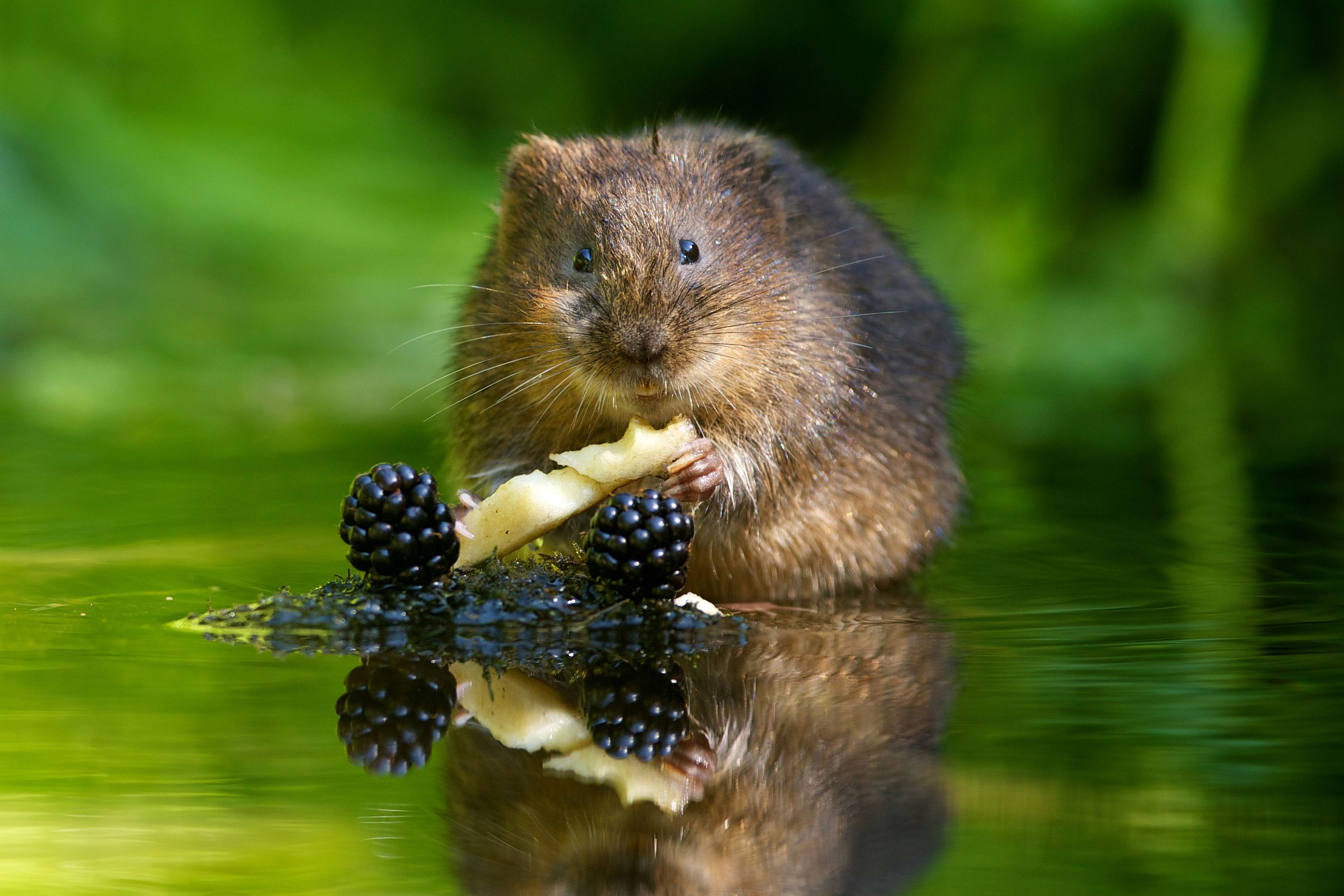Montane vole
(Microtus montanus)

Description
The montane vole (Microtus montanus) is a species of vole native to the western United States and Canada. Montane voles are medium-sized voles, with a total length of 14 to 22 cm (5.5 to 8.7 in), including the 2 to 7 cm (0.79 to 2.76 in) tail. Adults typically weigh anything from 37 to 85 grams (1.3 to 3.0 oz), with males being slightly larger than females, but the actual weight varies considerably with age, geography, and subspecies. The upper body is covered with fur of a dark brownish shade, again with some variation between individuals. The fur is paler on the flanks, and fades to grey or white on the underparts. The tail exhibits the same color variation, with the fur being dark brown to almost black on the upper surface and grey or white below. Montane voles possess scent glands on the hips, near the anus, and on the male genitalia. These glands increase in size in response to testosterone, and are therefore particularly large in adult males. At least some of these glands produce unique fatty acid esters, that may function in species recognition. Females have four pairs of teats, running from the chest to the groin. Montane voles are found in mountainous and other high elevation terrain in the western United States and Canada. Within this region they are generally found in drier climates than other species of vole, and in areas more dominated by grassland than by shrubs. Typical habitats include alpine meadows and grassy areas near streams or lakes; they are also often found in cropland or pasture. Fossils of montane voles have been recovered from as far back as the Irvingtonian, when they appear to have been more widespread across what is now the southwestern United States. Montane voles are herbivorous, although they may also eat small numbers of insects and other arthropods. The majority of their diet consists of forbs, supplemented by seeds, grasses, and fungi. One study in Colorado found that favored foods included vetch and evening primrose. Predators include a range of hawks and owls, weasels, and even coyotes. Montane voles have been reported to form up to 80% of the diet of great horned owls in Idaho. Montane voles have also been used in the laboratory in studies of African sleeping sickness, since they suffer similar symptoms to humans when infected with the parasite. Montane voles are nocturnal during the summer, but primarily diurnal during winter.
Taxonomic tree:







